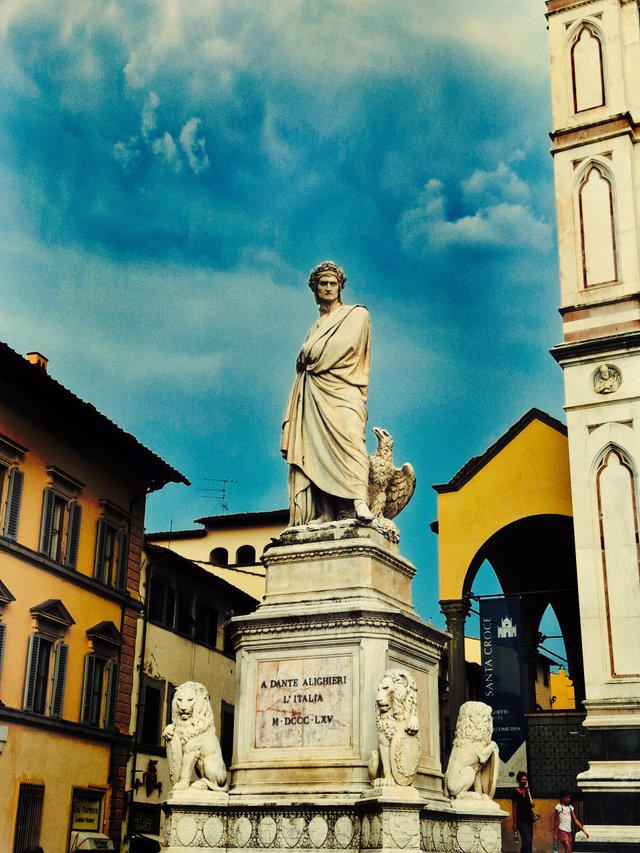📷Firenze
Savonarola and the Fire of Florence
The Triumphal Entry of King Charles VIII (November 17, 1494)
On November 17, King Charles VIII of France, dressed in black velvet and a gold-brocaded mantle, entered Florence as if it were a conquered city. Mounted magnificently, lance in hand, he rode through the Porta di San Frediano, followed by the formidable Cardinal della Rovere (later Pope Julius II), intent on deposing Alexander VI as a simoniacal usurper.
Behind them came the glittering ranks of the French chivalry, the Swiss infantry, the Gascon skirmishers, and the giant Scottish bowmen—some 12,000 men in all, whom the Florentines called uomini bestiali (“brutish men”).
As the royal procession crossed the Ponte Vecchio and wound through the Piazza della Signoria toward the Duomo, the people cried deafeningly, Viva Francia!
Yet when the King dismounted to enter the Cathedral, the crowd was disappointed. “Parve al popolo un poco diminuta la fama,” wrote the apothecary Luca Landucci—the people found him far less than the hero they had imagined. Small, awkward, and almost deformed, he was a poor image of the “new Cyrus” foretold by Savonarola’s prophecies.
Still, amid thunderous cheers of Viva Francia, he was escorted to the Medici Palace, prepared for his stay.
The Days of Tension
For a week, Florence blazed with light and celebration, though tension filled the air. The French, urged by Alfonsina de’ Medici, spoke of restoring the Medici family, while street brawls between Swiss mercenaries and citizens revealed that the Republic was not to be trifled with.
On November 24, a dramatic confrontation took place in the Palazzo Medici (now Riccardi). When the King angrily threatened, “I will bid my trumpets sound!” (Io farò dare nelle trombe), the Florentine patriot Piero Capponi seized the treaty, tore it in half, and retorted:
“And we will sound our bells!” (E noi faremo dare nelle campane!)
The King laughed, and the Republic was saved.
The New Republic of Florence
Under Savonarola’s influence, Florence became a Christian Republic, modeled partly on Venice’s constitution.
- The Greater Council held supreme power.
- The Council of Eighty advised the Signoria.
- A new law—“The Law of the Six Beans”—allowed appeals against death sentences.
In August 1495, parliaments were abolished forever. “The only purpose of parliament,” said Savonarola, “is to snatch power from the people.”
The Sala del Maggior Consiglio was built to house the new government, and in its courtyard the Republic placed Donatello’s David and Judith, inscribed with the stern motto:
“Exemplum salutis publicae cives posuere, 1495.”
(“The citizens placed this as an example of the public good.”)
The Prophet and the People
While Charles VIII marched south to conquer Naples, Savonarola took the helm of Florence’s spiritual and civic life. His sermons from the Duomo and San Marco called for moral renewal, denouncing vice and exalting righteousness.
The "Bonfire of the Vanities"
Carnival was replaced by holy processions and bonfires of the vanities—burning mirrors, fine clothes, and immoral books.
Children, organized into devout bands by Savonarola, marched through the streets singing hymns and collecting “vanities” for destruction.
“It was a holy time,” wrote Luca Landucci. “Praised be God that I saw that short holy time.”
Enemies Within and Without
Florence, however, was divided:
- Palleschi longed for the Medici.
- Arrabbiati despised Savonarola’s theocracy.
- The Compagnacci, led by Doffo Spini, sought to restore their life of vice.
Above all loomed the hostility of Pope Alexander VI (Roderigo Borgia) and Ludovico Sforza of Milan. Rome could not tolerate a friar who claimed to speak directly for God.
Savonarola vs. Rome
On Ash Wednesday, 1496, Savonarola began his fiery Lenten sermons on Amos and Zechariah in Santa Maria del Fiore, condemning corruption in the Church.
He thundered against Rome:
“Rome, thou new Babylon! God will gird thee with steel and consume thee with fire!”
His words echoed across Europe, and though the Pope forbade his preaching, Savonarola continued, declaring:
“If the Pope commands what is against charity, he is no instrument of the Lord.”
The city suffered famine and plague, but the “Children of the Friar” sang louder than ever.
The Fall of the Prophet
In 1497, Pope Alexander VI excommunicated Savonarola.
Florence grew restless; factions conspired.
Riots broke out in the Duomo during his sermons.
The next year, the ordeal by fire was proposed—an infamous trial to test Savonarola’s divine mission. When it failed amid chaos on April 7, 1498, the crowd turned against him.
That night, mobs attacked San Marco. After a brutal siege, Savonarola and two fellow friars, Fra Domenico and Fra Silvestro, were captured and dragged to the Palazzo Vecchio.
Trial, Torture, and Death
Under torture, Savonarola’s “confessions” were falsified.
Even his loyal followers despaired. Landucci wrote:
“I expected Florence to be a new Jerusalem... and I saw the contrary.”
Papal envoys Romolino and Torriani arrived to seal his fate.
The friars were condemned to death.
On May 23, 1498, Savonarola celebrated Mass for the last time.
As he was stripped of his Dominican habit, he said:
“Holy dress, I have kept thee spotless. I do not leave thee; thou art taken from me.”
When the Bishop said, “I separate thee from the Church militant and triumphant,” Savonarola calmly replied:
“From the militant, not the triumphant—for that is not in thy power.”
He was hanged and burned in the Piazza della Signoria, his ashes thrown into the Arno.
“Many fell from their faith,” wrote Landucci. “But some gathered his ashes from the river.”
It was the vigil of Ascension Day.
Epilogue
Fra Girolamo Savonarola’s dream—a Florence purified and consecrated to Christ—ended in fire. Yet his voice, denouncing corruption and proclaiming reform, echoed far beyond his death.
Centuries later, even his enemies admitted:
“Tanto fu sempre questo uomo simile a se stesso.”
(“This man was always true to himself.”)
Sources
- Luca Landucci, Diary of a Florentine Citizen
- Pasquale Villari, Life and Times of Girolamo Savonarola
- Contemporary chronicles of Florence, 1494–1498
| Category | #italy |
| Photo taken at | Florence - Italy |
)


Upvoted! Thank you for supporting witness @jswit.
0.00 SBD,
0.64 STEEM,
0.64 SP